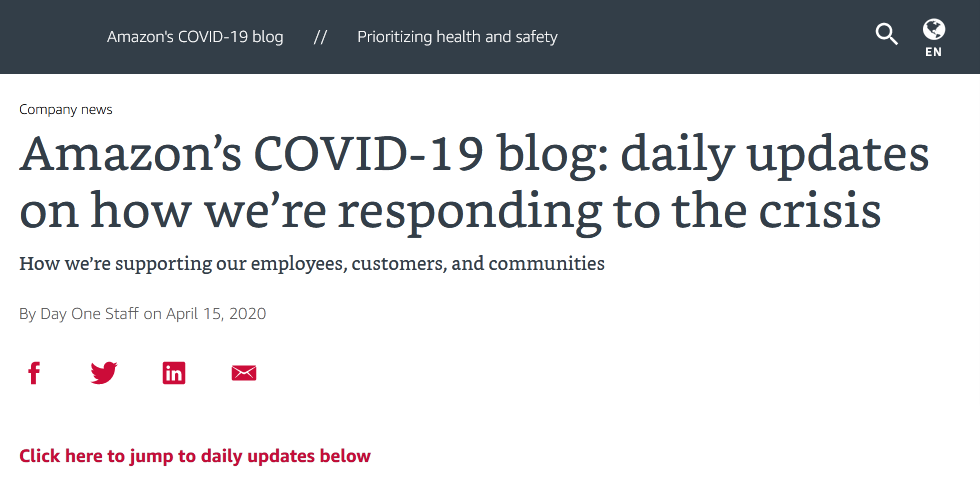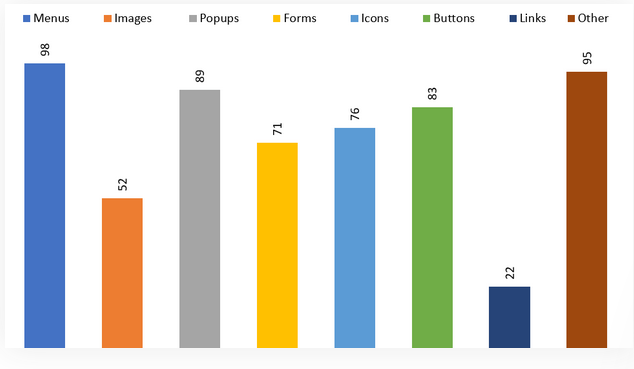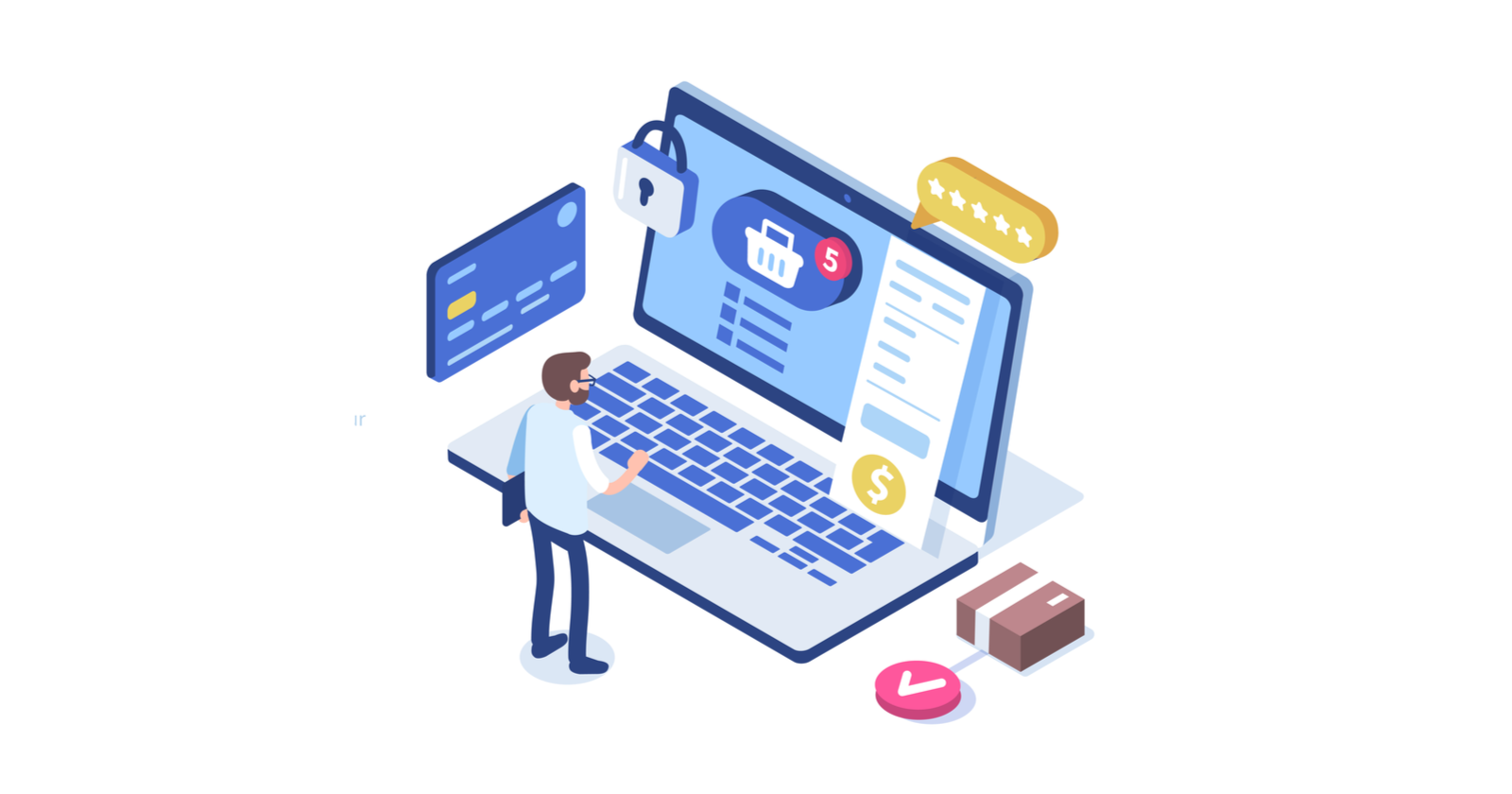The COVID-19 crisis is taking a toll on almost all industries.
There is a sharp decline in consumer spending, with people conserving their funds and investing only in essentials like groceries and medicine.
However, the ecommerce industry is faring better owing to changing customer behavior.
Not convinced?
These numbers prove that the ecommerce sector is booming during this COVID-19 outbreak:
- The average order value (AOV) for grocery, general retail, and pharmaceutical sites has surged.
- Cart abandonment emails lead to recovered AOV. In January 2020, recovered AOV of grocery and insurance sites showed a good improvement. Home improvement and DIY sites also showed higher conversions, probably because people are spending more time at home.
That’s good news, right?
Ecommerce sites are witnessing a surge in traffic.
They are getting many first-time customers, such as people with special needs or belonging to high-risk groups, who can no longer shop in brick-and-mortar stores.
Top-tier ecommerce vendors like Target, Amazon, and Walmart are experts at crisis marketing.
They have adapted quickly to cope with heightened customer demand and expectations.
But is your ecommerce site equipped to serve this high demand?
Are you prepared to handle customers with varied needs?
Not sure?
We have you covered. This post will elaborate on how you can take care of your customers and keep your ecommerce business afloat during this crisis.
But first, let’s talk about why you need to take care of your customers during this period.
Let’s get started.
Why Should Ecommerce Stores Take Special Care of Their Customers During This Corona Crisis?
While providing exemplary customer care should be a priority for your ecommerce store all year long, it’s something you can’t ignore during this crucial time.
Take a look at the main reasons:
1. Customer Behaviors Persist
Customer preferences are changing. They are moving from retail stores to online stores.
And, there’s a good chance that they will adhere to their new shopping behavior even when the crisis subsides.
Ecommerce stores that serve their customers well during this period will earn loyal customers who will keep generating revenue long after too.
That’s why 46% of marketers have updated their customer-facing policies to make them more conducive.
You, too, need to adapt your digital marketing strategies to respond proactively to this crisis.
2. Opportunity to Earn Customer Trust
Customers trust brands that are serious about social causes.
81% of customers say they must trust a brand to do what is right, and this factor plays a major role in shaping their purchase decisions.
What does this mean for your ecommerce store?
The COVID-19 crisis can be an opportunity to foster customer trust.
If your store demonstrates empathy towards customers by taking proactive measures such as offering free delivery or making the website ADA-compliant, you will come across as a more human brand.
3. Competitive Advantage
If you handle your customers efficiently during these challenging times, you will stride ahead of competitors that don’t.
You can multiply your income exponentially as customers will start depending on you to meet their evolving needs.
But, is there a flip side to this?
Yes, there is.
You need to accept that people are doing panic buying to stock up their reserves.
If your competitor offers a better deal or customer experience, you can lose existing and potential customers.
So, you should thoroughly research your customers and competitors to come up with unbeatable pricing, experience, and content.
Only then can you rise above the competition.
Take a cue from Amazon.
The mega-brand has invested heavily in last-mile logistics to ensure same-day and next-day deliveries.
Additionally, they have waived the $14.99 monthly charges for Amazon Fresh to capitalize on the boom in the grocery sector.
Amazon has a dedicated COVID-19 blog that shares daily updates on how the brand is helping its customers in this period.
It’s no surprise that Amazon’s coffers have swelled since the crisis started.

Now that you understand why you should care for your customers during this time, let’s take a look at how you can do so.
3 Ways Ecommerce Stores Can Care for Their Customers During the Lockdown Period
Your ecommerce store has a great opportunity to humanize your brand.
By making small yet significant changes in your website design, compliance policies, and operations, you can take care of your customers and boost your brand image.
Here are the three best ways by which your ecommerce store can put customer care at the forefront.
1. Make Your Ecommerce Website Compliant With ADA & WCAG 2.1
According to the latest census, 10% of the world population is suffering from a disability. Their disability makes it difficult for them to have a normal lifestyle.
What adds to their grief is the fact that ecommerce stores and corporate brands are not vigilant about protecting them and meeting their special needs.
During this crisis, customers with impairments are forced to go online and shop at ecommerce stores.
However, very few ecommerce websites are fully accessible and usable by impaired users, even with the help of assistive tools like screen readers.
Not all people with disabilities have caregivers to assist them with online shopping.
As it is, social care is an understaffed sector.
With social distancing norms stringently in place, many special-needs customers are left to fend for themselves.
Imagine this scenario:
A motor-challenged shopper holds a clicking stick in his mouth and tries to navigate through your ecommerce site.
If your menus and products are not reachable through the keyboard, you can understand how difficult it will be for this user to navigate through cluttered product pages and reach items on their shopping list.
Sounds daunting, doesn’t it?
That’s why web accessibility should be a top priority for your ecommerce site.
If your ecommerce website is not ADA and WCAG 2.1-compliant, you can’t hope to serve your specially-abled shoppers well.
You will also lose a huge conversion opportunity.
Not only this, but you can invite legal trouble if your ecommerce site is not ADA-compliant.
Last year, Guillermo Robles, a visually-impaired person, sued Domino’s stating that their website is not compatible with screen readers.
Though the case was disqualified on technical grounds, the fact remains that websites are places of public accommodation, and they should have inclusive design.
Are you behind the curve in this aspect?
Don’t worry, you are not alone.
accessiBe analyzed 10 million webpages for ADA and WCAG 2.1 compliance.
They evaluated different on-screen elements such as menus, images, pop-ups, and buttons for ease of use from an impaired user’s perspective.
The chart below shows the percentage of web pages that failed the compliance requirements:

The ecommerce sector’s stark indifference towards this audience demographic is disappointing.
The solution?
Follow these steps to make your ecommerce website compliant:
Menus
Users should be able to do the following:
- Navigate menu items using the Tab key.
- Move from the first menu item to the next using up and down arrow keys.
- Open and close dropdowns and menus using the Enter and Esc keys, respectively.
Images
Include a proper alt attribute to your images. This helps with image SEO.
Pop-ups
The control should shift from the main page to the first clickable pop-up element.
The cursor should loop back to the first element on reaching the last element.
Forms
Mandatory fields should have visual cues (like *) that screen readers can identify.
If a user submits a form with incomplete or invalid values, the first faulty field should get highlighted automatically.
Links
Look into these points:
- Links should look different than normal text.
- Place your links in a logical order. For example, a “Read More” link should come at the end of a partially-displayed chunk of text.
If you care for your customers and want to attract new ones, you need to make your ecommerce website ADA and WCAG 2.1 compliant.
A simple step like this will give rich returns in the form of improved sales, customer retention rates, and customer satisfaction.
2. Plan Your Delivery System Smartly
With no end of the pandemic in sight, shoppers are stocking up for bleaker days.
You need to look into your supply chain and delivery mechanism, so your customers are not left in a lurch.
More demand, coupled with less supply of stock and delivery labor, is causing great strain on ecommerce stores.
Even A-list brands like UK’s Tesco had to cap deliveries to three items per customer per day, regardless of where they shop (in-store or online).
In an email to customers, Tesco said that the aim was to fulfill the demands of maximum people with a limited inventory.
Tesco’s approach makes sense.
By freeing up delivery slots, they can serve the most vulnerable customers (1.5 million, according to the government database).
Vulnerable customers belong to high-risk households or have physical or mental incapacity.
For example, 19-year old Jessica Cranfield from Surrey suffers from cystic fibrosis.
The disease requires her to consume 3,000-4,000 calories per day.
Her mother, Sharon, worries about the availability of delivery slots because she can’t leave Jessica at home for long durations and go to fetch groceries.
For such customers, stores like Tesco are lifesavers.
You can take inspiration from Tesco if you also run local stores alongside your ecommerce store.
Encourage healthy customers (non-vulnerable) to opt for store pickup so that you can home deliver orders to customers who can’t come to the store.
Just like the mega-brand, send personalized emails to your existing customers and email contacts, explaining why this move is necessary.
Word your email tactfully so that you don’t come across as uncaring.
If the prospect of composing personalized emails for thousands of contacts gives you sleepless nights, we don’t blame you.
You can use an email automation tool like Omnisend to compose, personalize, and schedule your emails.
Its drag-and-drop editor will help you compose your email in minutes and update you on its delivery status.
You can create end-to-end email workflows for sending periodic emails and reminding customers that you are committed to their safety and well-being as well.
If you have the budget, you can use Constant Contact or Pardot as well. You can combine email automation with lead generation using these tools.
Popular ecommerce stores are using such periodical emails too.
To keep customers away from stockpiling, Sainsbury’s sends regular emails to update customers about the arrival of new stock.
They want their customers to avoid panic buying so that the store has enough stock to meet the basic requirements of every shopper.
Older people are also in the vulnerable category of shoppers.
Many department stores like the ones in Iceland have dedicated shopping hours for them.
This goes on to show that you care for everyone.
3. Optimize Your Website to Handle Increased Volumes
Your ecommerce site is your storefront.
This is the time when you need to optimize your website’s look, feel, and functionality so that people can use it comfortably.
If you think your website is good enough to handle the flood of visitors, check out this stat – cart abandonment rates in the grocery sector rose by 8% during this period, according to a SalesCycle survey of leading grocery brands.
Surprised?
Even popular eGrocery sites like Ocado that were included in the survey couldn’t cater to the unprecedented visitor volume.
Their website performed sluggishly, which led people to abandon their carts and move to a competitor site.
So, how can you avoid the same mistakes?
As the lockdown period extends, experts are researching the changing consumer psyche.
They have revealed trends in how people are searching and spending in this period.
After studying these insights, we have compiled some tips that you can use to make your ecommerce website quick and responsive:
Highlight Your Offers & USPs in Your Homepage Banner Itself
On-site pop-ups can ease new visitors’ anxiety and move them along the funnel smoothly.
So use them well.
Optimize Your Site for Mobile Devices
In 2021, 72.9% of all retail ecommerce will come from mobile devices.
As of now, desktop usage has increased since people are staying put in one place.
Still, your website needs to be mobile-friendly as more shoppers have access to mobiles than desktops.
Provide Contactless Payment Options
People want to avoid catching or spreading the infection after the WHO advised them to switch to cash-free modes.
That’s one reason why cashless payment options like credit and debit cards, internet banking, and online wallets have become popular.
Reduce Your Page Load Time
You can do this by using compressed media, a fast web host, caches, and auto-switch off plugins.
Help your customers reach the content they want quickly.
Use a Simple Website Design With a Familiar Layout & Architecture
You don’t want new visitors to leave your site in a huff because they couldn’t find the product they’re looking for.
Display Your Products Attractively
Write complete product descriptions.
Use high-definition imagery and multiple pictures to show your wares in the best light.
Don’t make customers hunt for information and add to their panic.
Ready to Show Consumers You Care?
How well your ecommerce brand responds to the pandemic will determine if consumers will remember you positively or negatively post-crisis.
It’s the right time to put your business gains on the back-burner and focus on your customers’ comfort and safety.
In the long term, customer service is the best way to earn more sales and customer loyalty.
Change your strategies, modify your website, and make it accessible to all to improve your customer experience.
More Resources:
- Impact of COVID-19 on Ecommerce: 4 Ways to Adapt Your Digital Strategy
- 5 Ecommerce SEO Tips to Improve Organic Performance
- SEO in the Age of COVID-19: Organic Impacts on the Retail Industry
Image Credits
Screenshot taken by author, April 2020
In-Post Image: accessiBe





